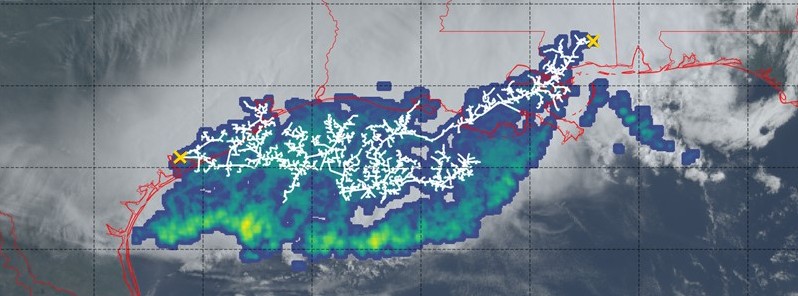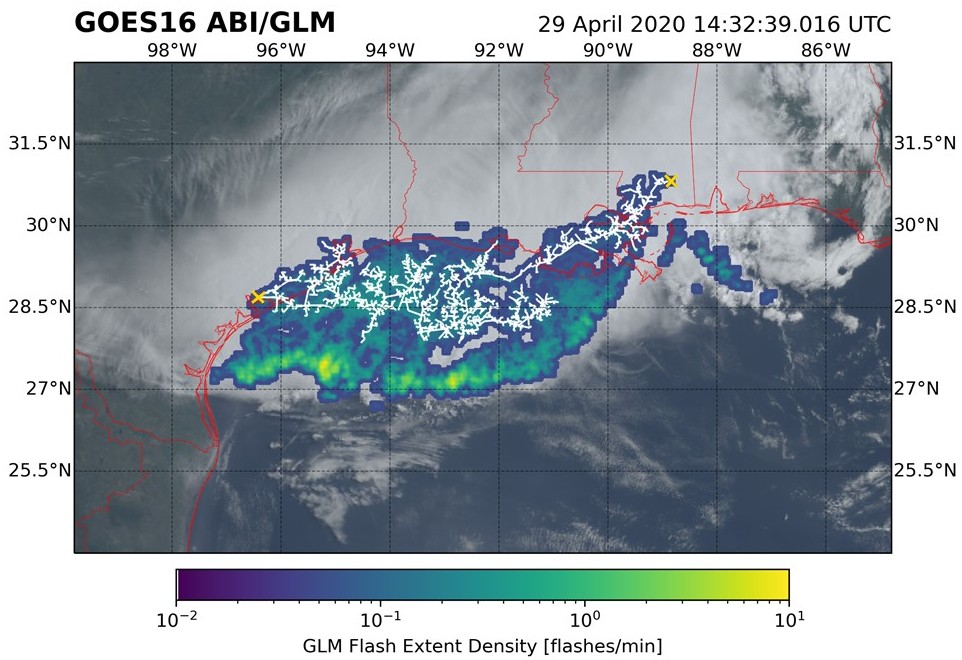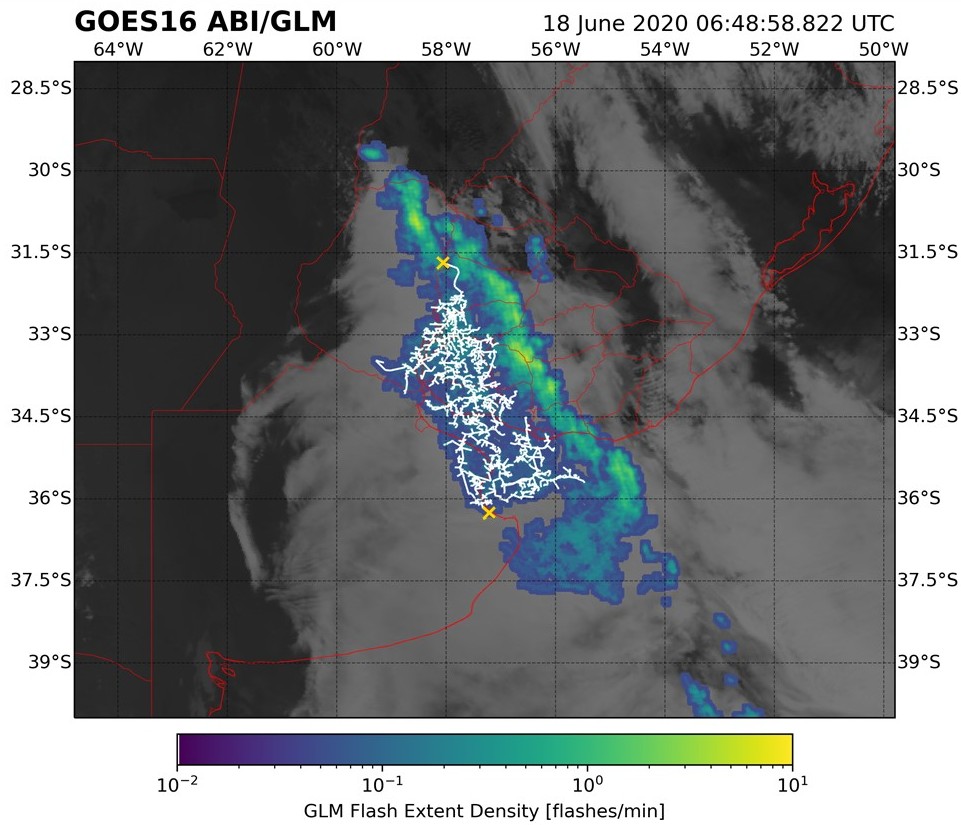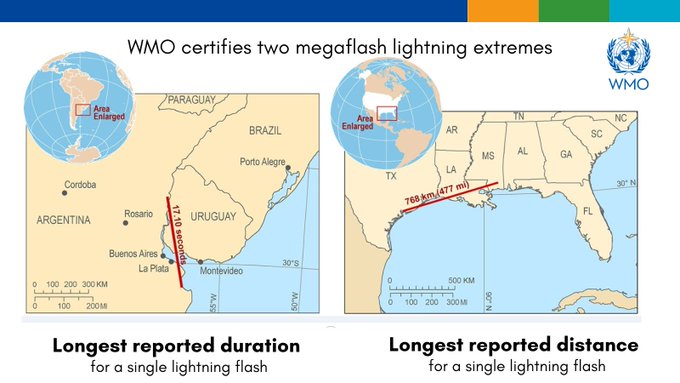WMO verifies 2 new world records for extreme megaflashes of lightning

The World Meteorological Organization (WMO) has verified 2 new world records for extreme megaflashes of lightning.
The first is for the longest distance single flash of 768 ± 8 km (477.2 ± 5 miles) across the southern U.S. on April 29, 2020. This is 60 km (37.2 miles) more than the previous record, with a distance of 709 ± 8 km (440.6 ± 5 miles) across parts of southern Brazil on October 31, 2018.
Both the previous and new records used the same maximum great circle distance methodology to measure flash extent.

The second verified record is for the greatest duration for a single lightning flash of 17.102 ± 0.002 seconds from the flash that developed continuously through a thunderstorm over Uruguay and northern Argentina on June 18, 2020.
The longest duration megaflash had a previous duration of 16.73 seconds which was derived from a flash that developed continuously over northern Argentina on March 4, 2019, 0.37 seconds shorter than the new record.

The new record strikes occurred in hotspots for Mesoscale Convective System (MCS) thunderstorms, whose dynamics permit extraordinary megaflashes to occur – namely, the Great Plains in North America, and the La Plata basin in South America.

"These are extraordinary records from single lightning flash events. Environmental extremes are living measurements of the power of nature, as well as scientific progress in being able to make such assessments. It is likely that even greater extremes still exist, and that we will be able to observe them as lightning detection technology improves," said Professor Randall Cerveny, rapporteur of Weather and Climate Extremes for WMO.

Featured image credit: NOAA/GOES-16

The reason has to do with the increase of solar-cosmic radiation in the atmosphere. And the increase of the radiation has to do with two reasons, the changing sun and the rapid declining of earth’s magnetic field.